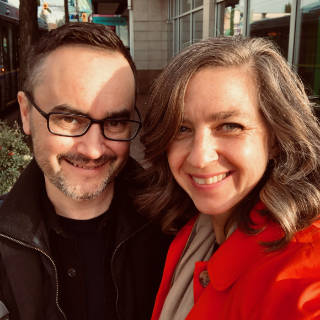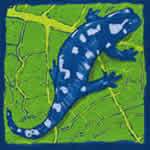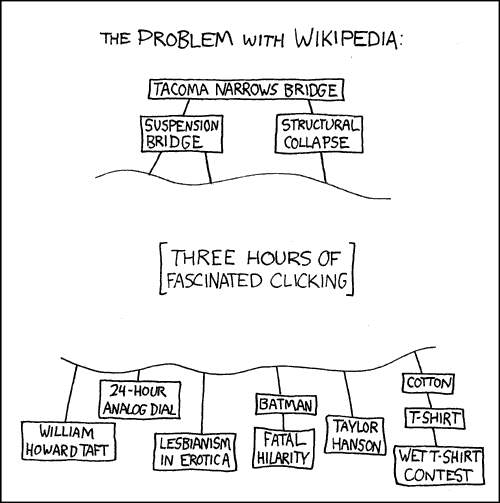About PainScience.com
20 years of publishing science-based advice about aches, pains, and injuries
See also: sitemap • front page • what’s new • help
The science of aches, pains, and injuries is surprisingly weird, controversial, and interesting. My job is to wrap my head around that science and translate it for both patients and pros. I try to make it friendlier than the institutional health care sites, but more scholarly and detailed than most health blogs. This is a full-time job, paid for with book sales, memberships, and donations, and not advertising.
PainScience.com is …
- 237 featured articles about common pain problems, how pain works, and reviews of treatments and therapies. Many of these are “best of breed” articles that I’ve been updating constantly for many years.
- 10 book-length tutorials about some of the most maddeningly stubborn pain problems and injuries (like neck pain or iliotibial band syndrome). I sell these to fund the site without ads.
- 1154 smaller blog/newsletter posts about interesting, useful, and odd stuff I come across while I am updating the big articles.
- 3500+ scientific paper citations in a curated bibliography, about 700 of them described more thoroughly.
The word count for all that is about 2 million in all, bigger than all the Game of Thrones novels. For ideas about where to start, see the home page or what’s new.
What makes PainScience.com different and better?
- no flaky bullshit, an openly pro-science bias
- heavily referenced
- clean design, clear writing
- it’s a library of resources, more like Wikipedia than a “blog”1PainSci is not crowdsourced like Wikipedia, but it is encyclopedic (wiki-like) in nature: a library of large, well-maintained articles intended to be perennially useful, rather than a log of short, ephemeral posts. PainScience.com has a blog, but it’s a sideshow; the focus is 237 featured articles and guides.
- no ads or social media buttons
- more detail on many topics than anywhere else
- endless dorky, quirky details in footnotes that popup in place2My footnotes contain either extra commentary and whimsical asides, or citations to science and other sources, like this:
Heinemeier KM, Schjerling P, Heinemeier J, Magnusson SP, Kjaer M. Lack of tissue renewal in human adult Achilles tendon is revealed by nuclear bomb (14)C. FASEB J. 2013 May;27(5):2074–9. PubMed 23401563 ❐ PainSci Bibliography 53171 ❐
There is basically no turnover in tendon tissue in adults (as measured in the Achilles tendon in this experiment).
And how do we know this? Because NUKULAR BOMBAS! The atomic signatures of the era of nuclear bomb testing are still written into the tendons of people who were alive at the time, trapped like bubbles of ancient air in an ice core.
Incredible. Very cool science. Indeed, probably the coolest tendon study that has ever been or ever will be.
UPDATE: This finding was confirmed for healthy tendon in a later study. But in un-healthy tendon? That’s a different story. There is turnover there! Which is hard to interpret. See Heinemeier et al.
- constantly updated with fresh science3Detailed update logs (like Wikipedia) mean readers can easily see what’s new (or corrected). These logs demonstrate a long-term commitment to quality and accuracy. (Although they are “fine print,” I think they are more meaningful than 98% of the comments that most Internet pages waste pixels on.) See the What’s New on PainScience.com? page for all updates around the site going back many months.
And who am I?

Me & my lovely wife.
I am a science journalist from Vancouver, Canada. I got some clinical experience as a Registered Massage Therapist from 2000–2010, and some exceptional training in critical analysis as the assistant editor of ScienceBasedMedicine.org from 2009–2016. I am an amateur athlete with lots of experience with my own injuries and, unfortunately, some serious chronic pain too. I grew up in the Canadian north, but I’ve been in the southwest corner of Canada since the early 90s. I’ve been married for 23 years. Full bio, with more information about my qualifications in particular.
Follow the money
Most PainScience.com content is free. Revenue comes from book sales, a membership program, and donations. I do not sell advertising. The self-publishing success story is of interest to many readers. Please support PainScience.com by buying a book (for yourself or for someone else who needs it), becoming a member, or making a donation. Or just sign up for the free newsletter for now to keep in touch:
Frequently asked questions about PainScience.com
There’s a help page for customer questions. These are some classic frequently asked questions about the subject matter of the website.
Q. Is “pain science” a treatment method (modality)?
A. No! But this is a common misconception. Pain science is a generic term for the scientific study of the phenomenon of pain. This website is devoted to the science of pain, and definitely not any branded method of treatment.more
This phenomenon (“pain science” being misinterpreted as a modality) just keeps getting more irritating, bizarre, and worrisome for me as the publisher of PainScience.com. I used to think it was just a bit of odd tribal crankery, easily ignored, but it just seems to be picking up more and more steam.
Never for one minute have I ever thought of “pain science” as anything but a broad sub-genre of medical science, as generic as “geology” or “astronomy.” The study of a subject. The study of pain. Never once a method, not even a tiny bit. No other interpretation was even on my radar, and I am rather horrified and baffled by other interpretations that have emerged since then!
On the bright side, it is astonishing how many people are talking about “pain science” these days… even if a large percentage of them seem to have a bizarrely specific and hopelessly wrong interpretation of what it means.
But all publicity is good publicity, right? Actually, no…
Q. There’s a lot of debunking on PainScience.com. Why so “negative”?
A. I reject the premise of the question! Read about why I’m a debunker (and get a taste of some of my fabulous hate mail).
Q. If you’re such a debunker, why isn’t Brand X debunked here?
A. Usually due to the legal risks. PainScience.com sticks mostly to reviewing therapy claims in principle, rarely pointing a finger at specific brands or gurus. more
It’s really quite legally dangerous to criticize brands in general, and even worse in this field, where bullshit abounds and skins are thin. About half the serious anti-quackery activists I know have been sued at least once, and all of them have been threatened or significantly harassed in some way. The danger is real. It doesn’t matter how right you are or how ridiculous the legal claim is: it’s expensive to fend off a determined SLAPP — strategic lawsuit against public participation — because that’s the whole point of them. There are anti-SLAPP laws in many places around the world now, so it’s getting better, but it’s still tricky and risky, especially because plaintiffs can often find a way to sue in a jurisdiction without anti-SLAPP laws (or ones with significant loopholes). Have a look at John Oliver’s comedic reporting on SLAPP suits. It’s more fun than mine (obviously).
And so I stick to reviewing therapy claims in principle, and will only go after a few quite strategically chosen brands.
Q. So what’s with the salamander anyway?
A. He’s more mascot than logo, a symbol of regeneration and healing. Their regenerative superpower is an inspiring, profound example of what is possible in biology. Regenerative biology isn’t very relevant to most aches and pains and injuries, but that may change as the (over-hyped) stem cell therapies are refind and advanced. Read more.
More about PainScience.com

The salamander is a symbol of potent regeneration & healing.
- I have a reading guide just for card-carrying skeptics — an important audience for me.
- How did PainScience.com get started? The origin story.
- How does PainScience.com work? Take a behind-the-scenes tour of some of the quirky tech used here.
- PainScience.com does not host comments, because reasons. (“Because reasons” is a bit of cute slang.)

Kind of like Wikipedia
A reader mentioned to me by email that the “problem” with PainScience.com is that “it’s exactly like this” — like getting lost in fascinating distractions in Wikipedia. A very generous comparison. I do try …
xkcd #214 © xkcd.com by Randall Munroe
